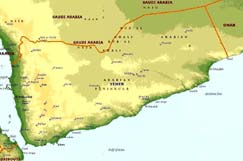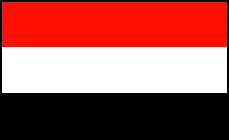-
-
- Yemen Map
|
-
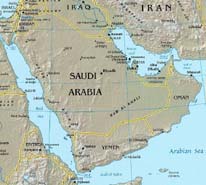
-
- Middle East Map
|
|
-
|
- latest picture: February 15, 2011
|
-
-
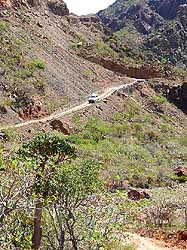
|
-
-
-
-
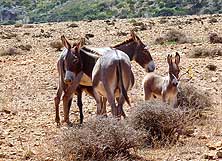
|
-
-
-
-
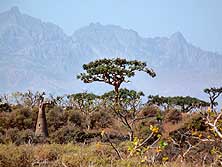
|
- 049
Crossing is difficult on this stony
- one line track to Homhil in the Northeast.
- It is said to be the steepest drivable
- ascent and descent in Socotra
|
- 050
Freely roaming donkeys look
- curiously when we cross their path
|
- 051
A tall frankincense tree (Boswelia
- essence) grows in the untouched nature of
- “Homhil Nature Reserve” on a plateau. The
- resin is obtained with a cut in the bark
|
-
- Continuation from 3rd day, February 11th, 2011: (back click please here)
-
- The track is not only very stony and narrow, but also very steep. So steep that I do not
dare to ask Ahmed to stop as I usually do when I spot a peculiar plant, a bizarre tree or
a strange flower. It is said to be the steepest ascent on Socotra still drivable by car.
Crossing is not possible. Therefore, our driver already waits at a wider site when he
spots high up a vehicle descending. It is and remains the sole one. More and more we move
closer to a region where life has been left to flourish undisturbed. First light beige and
golden brown Bottle Trees, also known as Desert Roses, appear. Some are flowering. Their
delicate pink blossoms contrast wonderfully to the rather brownish colors of the desert.
|
-
-
-
-
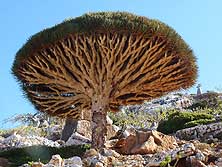
|
-
-
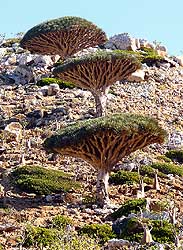
|
-
-
-
-
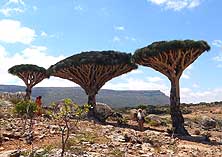
|
- 052
A majestic, endemic “Dragon Blood
- Tree” (Dracena cinnibari) in Homhil. Its
- reddish resin is used for medicine
- and beauty purposes
|
- 053
Nowhere else in the world there
- are “Dragon Blood Trees” with their
- bolt upright stem and mushroom
- shaped hat of spiny leaves
|
- 054
Emil is posing for a picture between
- gigantic “Dragon Blood Trees”
|
-
- Then the knobby Frankincense Trees pop up. There are seven species on Socotra. Its resin
is obtained by a cut to the bark. The well scented incense is used also to perfume homes
and clothing. Frankincense trees grow also near Salalah in Oman,
but there they are much smaller.
And then, on the plateau, suddenly we are standing in front of them: The endemic mighty
Dragon Blood Trees – whole forests – what a breathtaking sight, putting us
nature lover in euphoria. Nowhere else in the world Dragon Blood Trees of this kind, with
their bolt upright stem and mushroom shaped crown of spiny leaves, are growing. “How
would you call Socotra: Paradise or unique?”, Abdullah has asked us many times.
Today, we both agree: Socotra is UNIQUE!
|
-
-
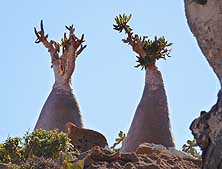
|
-
-
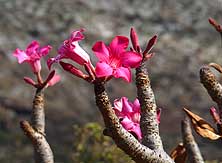
|
-
-
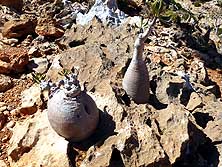
|
- 055
Two “Bottle Trees” (Adenium obesium),
- also called Desert Roses, rise skywards.
- They are plentiful on Socotra …..
|
- 056
….. their delicate pink
- blossom is a refreshing dot amidst
- the brown desert color …..
|
- 057
….. they are frugal –
- they even grow on rocks
|
-
- The Homhil Camping sits at the edge of a canyon and is looked after by the people of the
nearby village. There is a clean washroom with a cold shower. The tent sites are small,
plain stone terraces. Today, we are only two parties – besides us a Hungarian with a
two months’ visa. His hobby is photography. What a surprise seeing him unrolling a
small solar cell for charging batteries. We did not even know that something like that
exists.
|
-
-
-
-
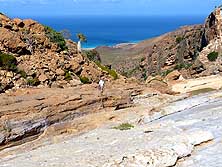
|
-
-
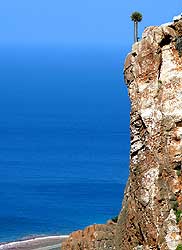
|
-
-
-
-
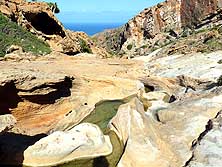
|
- 058
Emil is exploring the
- “Homhil Canyon” …..
|
- 059
..... and is especially fascinated
- of this Dragon Blood Tree that
- grows on the edge of the cliff
|
- 060
A well at “Homhil Canyon” formed
- different channels in the soft rock
|
-
- While he takes off after lunch with a guide in search of chamaeleons, we get the
permission from our guide to hike through the canyon on our own. Silence and chirping of
birds take turns. We discover new flowers, sheltered and half hidden in small stone
niches, blossoming cacti, red dragonflies around small ponds and again and again new
shapes of the fascinating Bottle and Dragon Blood Trees.
|
-
-
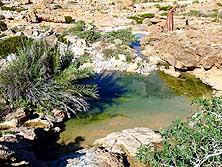
|
-
-
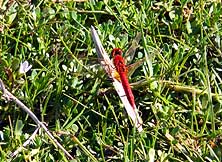
|
-
-
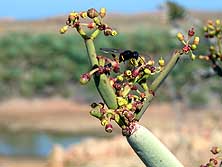
|
- 061
A natural pond at “Homhil Canyon”.
- Where there is water, there is life, and here
- the environment seems still intact …..
|
- 062
..... a red dragon fly is resting
- on a blade of grass …..
|
- 063
..... a beetle is feeding on a blossom
|
-
- The Dragon Blood Tree produces a resin underneath its bark that is knocked off by the
locals, collected and sold. It is said to be used for medical as well as cosmetic
purposes. Village children are coming running and are very persistent and pushy to
convince tourists to buy it, packed in tiny plastic bags.
|
-
-
-
-
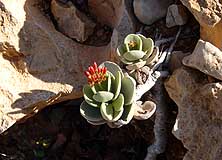
|
-
-
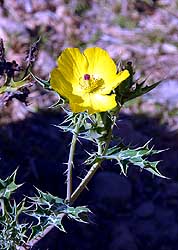
|
-
-
-
-
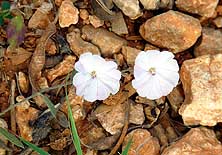
|
- 064
This plant endemic to Socotra
- (Kalanchoe farinacea) belongs to the
- succulents and looks particularly attractive
- between the stones, growing up to 12in [30cm]
|
- 065
|
- 066
|
- In the dry, stony ground of the “Homhil Canyon” delicate flowers are blooming
|
-
- When we happily return from our trip, the Hungarian tourist is not yet back, the
campsite caretaker is just on the brink to return to his village for the night and our two
companions are chewing Khat (Qat), the national drug, as they do it every afternoon.
Although it’s said that Khat only stimulates, we find that the two are looking at us
somehow glass-eyed and lost in reverie. At 5pm the sun already sets behind the distant
mountain range and the silhouettes of the majestic Dragon Blood Trees look beautiful in
the evening glow. It is getting fresh, there is no electricity. Therefore at 8pm we lay
already in our little tent.
|
-
-
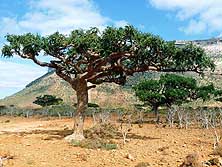
|
-
-
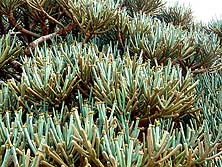
|
-
-
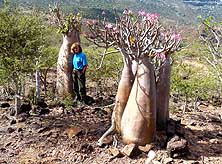
|
- 067
A stunning frankincense tree (Boswelia
- essence) in Homhil. There are seven species
- on Socotra. The well scented incense is
- also used to perfume homes and clothing
|
- 068
In the “Homhil Nature Reserve”,
- also Euphorbia (Euphorbia arbuscula) grow
|
- 069
Liliana is standing in front of
- a bottle tree respectively desert rose
|
-
- 4th Day: February 12th, 2011:
-
- Everything is dripping from the enormous humidity when we get up at sunrise. Already at
6.30am the campsite caretaker returns from his village with fresh, still warm pita (flat
bread). Time for breakfast! Right afterwards, we set off to Hadibo. We need an
“administrative day” to settle a few things in connection with the ongoing
shipment of our car from the Philippines to Sri Lanka, but also to charge the computer, cellular and camera
batteries. Since our arrival, our two cameras are running at full speed. Alone during the
first two days we shot 600 pictures! Once more we lodge at the Taj Socotra Hotel –
this time in a quieter room – and spend the day with writing emails, screening
pictures and do some laundry.
|
-
-
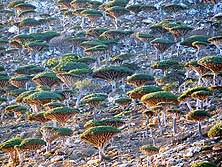
|
-
-
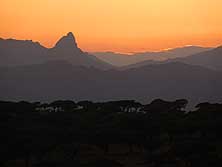
|
-
-
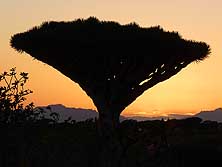
|
- 070
A forest of Dragon Blood Trees is
- shining in the evening light in Homhil.
- These unique trees have been left to
- flourish undisturbed in Socotra
|
- 071
Sunset in Homhil .....
|
- 072
The silhouette of a native Dragon
- Blood Tree, Socotra’s landmark,
- in the setting sun in Homhil
|
-
- 5th Day: February 13th, 2011:
-
- Our friendly lunchroom opens already at 5am – ideal for us early birds. Our guide
agreed that we can take breakfast alone at this time. That suits us, having so the
opportunity to stroll through the city without “supervision”. Already at 6am we
are on our way. Like always, goats, chicken and the omnipresent vultures scavenge in the
plentiful garbage. From the narrow alleys deeply covered-up women appear. Most are on
their way to the souk. Its display is plentiful: Goat meat – the fresh supply is
bleating aside – then vegetable, fruits, dates, nuts, spices, household items,
textiles, car accessories – just everything needed in daily life respectively what
Westerners are searching in the supermarket.
|
-
-
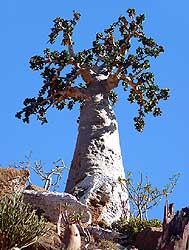
|
-
-
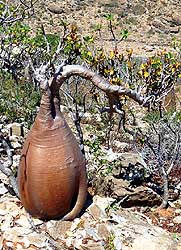
|
-
-
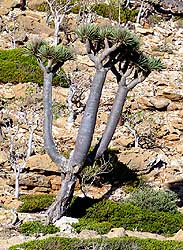
|
- 073
It belongs to the endangered
- species: A Cucumber Tree in Homhill
- (Dendrosicyos socotranum)
|
- 074
One of the unusual bottle
- tree. It can accumulate big
- quantities of water in its “belly“
|
- 075
Small Dragon Blood Tree
- (???)
|
-
- What we like most, however, are all these small exotic shops where available items are
nicely pictured on the outer walls or inner doors. It is very useful as not everybody is
able to read; thus pictures help. Often all we want is to take a photo of one of them,
when an angry voice of a man or even a boy is hearable: “No, no”!, just because
from somewhere – not yet visible for us – a woman comes along. On Socotra it is
strictly forbidden to take pictures of women, even girls. To our opinion there is a real
paranoia about it.
|
-
-
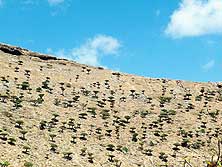
|
-
-
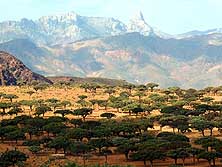
|
-
-
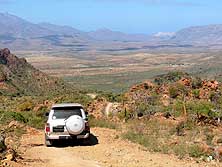
|
- 076
The landscape in Homhil is covered
- distinctly with the Dragon Blood Trees
|
- 077
The rising sun catches the Dragon
- Blood Tree Forest at “Homhil“
|
- 078
“Our“ LandCruiser starts the
- descent from Homhil down to the valley
|
-
- At 8am we are back at the hotel and at 8.20am our dusty LandCruiser drives up. Our
discovery tour continues: Firstly again towards the East and next to Aomak, to the sand
dunes along the South coast. We are crossing the mountains. Now and then we pass a
picturesque oasis with flat houses built from natural stones; and again and again blooming
Desert Rose Trees on the mountain slopes are catching our eyes. Later the track follows
and crosses a river bed with some deep water pools.
|
-
-
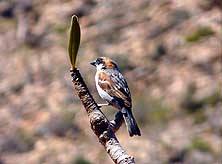
|
-
-
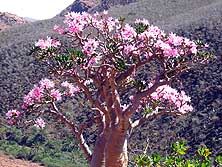
|
-
-
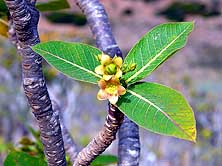
|
- 079
An endemic Socotra sparrow
- (Passer insularis) is chirping on a tree branch
|
- 080
A Desert Rose (Bottle Tree)
- is in full bloom
|
- 081
An eye-catching flower
- (Jatropha unicostata)
|
-
- The moment we reach the South coast, an intensive desert feeling takes over. An endless
band of white sand dunes with roaming camels stretch out in front of us. Our camping at
Aomak lies at the fine sandy beach near the turquoise sea – a very lovely spot. After
lunch – the already traditional rice with potatoe sauce – we visit the nearby
Dogub Cave. Stalagmites and stalactites picturesquely frame the entrance. We like it.
|
-
-
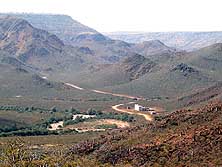
|
-
-
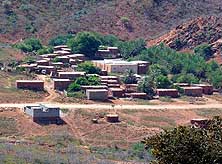
|
-
-
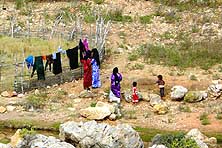
|
- 082
From Deleisha in the North to
- Mahferhin in the South the track
- meanders initially through a barren
- mountain scenery .....
|
- 083
….. we drive past a
- picturesque village …..
|
- 084
..... where women
- hang-up their washing
|
-
- In the meantime more groups arrived at the camping: A young couple from Italy, three
Chinese, a tour group from Austria and Klaus, a German working with archeology. He is our
neighbor. His tent is separated by a thatched wall from ours. We are already asleep when
we are awakened by a loud chatter coming from there. Emil checks. Guides and drivers are
sitting together having a good time. How can Klaus bear that noise? Soon we realize that
he already moved out to the dunes with his sleeping bag. Emil put his foot down and after
that it finally gets quiet.
|
-
-
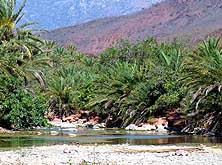
|
-
-
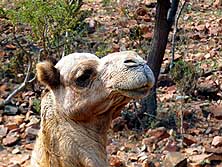
|
-
-
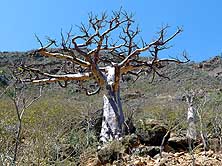
|
- 085
Later the track follows a river in a
- canyon, which is crossed several times
|
- 086
The first camel – actually
- a dromedary – appears
|
- 087
A leafless knobby
- tree in the dry desert scenery
|
-
- We no longer understand the world anymore: Our crew (stimulated by Khat) knows from the
very beginning how sensitive we are about noise in the night. And they choose exactly the
site directly beside us for their discussion that was getting the longer the noisier.
Something is wrong, Emil comments: To get a good night’s sleep, the paying visitor
– and it’s not so little money – has to escape to the dunes while the
locals make themselves comfortable on the mattresses and cushions. Emil has a serious
conversation about it with Abdullah, our guide. With it, we already plant our first cactus
in our relationship – but not the last one!
|
-
-
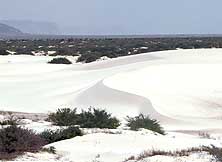
|
-
-

|
-
-
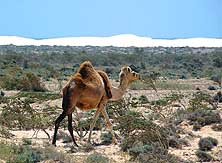
|
- 088
In the South, white
- sand dunes appear …..
|
- 089
….. goats gather under
- the only tree for shade …..
|
- 090
..... a camel (dromedary)
- is roaming around
|
-
- 6th Day: February 14th, 2011:
-
- There is no sign of another “early bird” when shortly after 6am the sun rises
from the sea and its rays catch the white dunes. “Look there!”, Emil calls
excitedly. A mother camel and its cub appear in front of a dune and both walk unhurriedly
along the sea shore, right towards the ball of the rising sun. My heart skips a beat as it
always does at those precious moments. For both of us it is hard to comprehend how
everybody else is still lying in bed, missing such a unique experience!
|
-
-
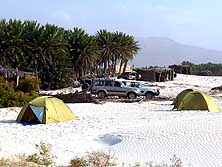
|
-
-
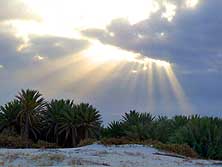
|
-
-
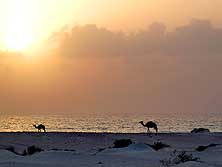
|
- 091
Camp behind the sand dunes
- in Aomak at the South coast
|
- 092
The sun is setting behind the
- palm trees at the Aomak Camp
|
- 093
A young dromedary and its
- mother are walking towards the
- rising sun at the Aomak Camp
|
-
- Later, we chat with the Austrians who are sitting at a table and having breakfast (no,
we are not jealous of the table and the chairs!). They booked with Dieterle Tours in
Germany; their guide speaks German well. It is from him that we get to know that the
panoramic view from the antenna on the Momi plateau is beautiful, but the track was rough.
As we reached on the 3rd day – coming from Homhil – the Momi road junction and
Emil wanted to branch off there, Abdullah didn’t want to cooperate – the region
wouldn’t offer a lot anyway. This leads to another discussion with our guide. Only
when Emil threatens to cancel the remaining tour, he is willing to make good for it. He
also apologizes for last night. Let’s forget about it! With a handshake we make peace
again.
|
-
-
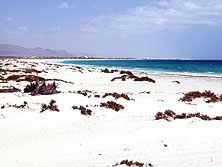
|
-
-
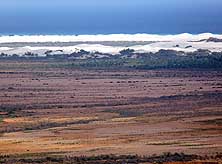
|
-
-
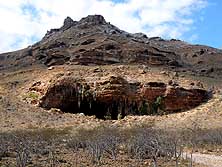
|
- 094
Loneliness as far as we can see:
- The turquoise lagoon and the white
- sand dunes near Aomak
|
- 095
The white ribbon of the sea
- sand dunes between the red
- desert and the blue ocean
|
- 096
Entrance of the Dogub
- cave near Aomak
|
-
- It is hazy, when mid-morning we drive on the only sealed South-North-connection through
barren land to the Dicksam Plateau where the biggest forest of the Dragon Blood Trees
stands. Again we discover beautiful examples and, to make the site even more special, the
sun is just peaking through the clouds – simply wonderful.
|
-
-
-
-
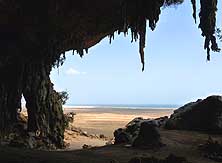
|
-
-
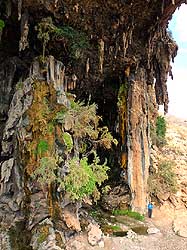
|
-
-
-
-
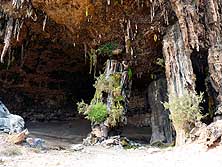
|
- 097
View through the entrance of the
- Dogub cave over the desert and the ocean
|
- 098
Water drops have formed
- wonderful Stalactites
|
- 099
Stalagmites and stalactites are framing
- picturesquely the entrance of the cave
|
-
- Just beside, the Shebahon point offers a spectacular view over the cliffy Daerhu-Canyon.
We cannot take in the scenery quietly though. Immediately children from the nearby village
come running and want to sell with an extreme persistence resin of the Dragon Blood Trees.
A girl with felty hair and a snotty nose is following Emil on the heels.
|
-
-
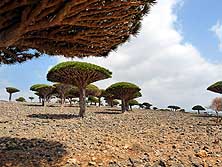
|
-
-
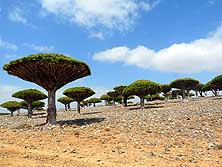
|
-
-
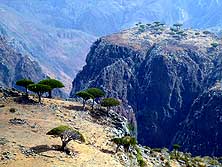
|
- 100
On the Dicksam Plateau, we
- are standing once more in front of
- an endemic Dragen Blood Tree forest
|
- 101
….. these old trees are looking
- simply beautiful from every angle
|
- 102
From the Shebahon viewpoint
- at Dicksam Plateau the view over
- the Daerhu canyon is stunning
|
-
- Up to now, every day had a wonderful natural experience on stock. Also today is no
difference. On a rocky track we move down into the deep canyon with its palm trees, its
natural rock pools and the flowering desert roses that cling to the steep rock walls.
Under a shady tree down in the wadi, our crew is preparing our lunch: Rice with a potato
and pie sauce, what else!
|
-
-
-
-
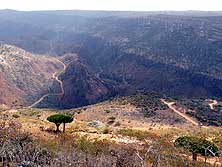
|
-
-
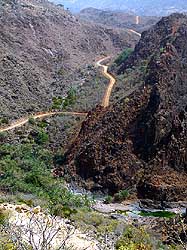
|
-
-
-
-
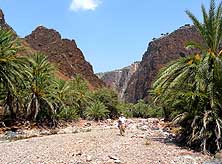
|
- 103
A rocky, meandering track
- leads from the Dicksam Plateau
- down to the deep Daerhu canyon …..
|
- 104
….. on the other side of
- the canyon, a track leads
- further across the mountains
|
- 105
..... Emil is exploring the
- surroundings in the
- canyon of Wadi Daerhu
|
-
- Early afternoon, the other tour groups leave and we are sitting alone on the white
boulders surrounding the natural green shimmering pool. We wash the dust from our bodies,
swim and enjoy the stillness of this unique spot until it is time to return to the
plateau. Camping is not allowed in the canyon.
|
-
-
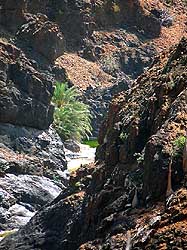
|
-
-
-
-
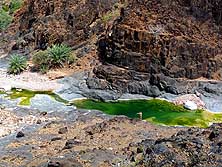
|
-
-
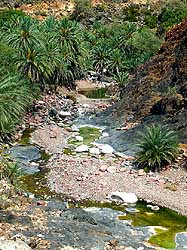
|
- 106
A glimpse to the canyon’s
- riverbed through cliffy rocks …..
|
- 107
..... and to the crystal clear
- pond inviting for a swim
|
- 108
The small natural ponds, lined
- with palms, teem with small fishes
|
-
- On the plateau, lying at an altitude of 2’300ft., we meet Klaus again. Together we
camp at the edge of the canyon. After dark, we sit on the mat under a canopy of brilliant
stars, drink hot and sweet tea and sample a piece of the tough goat that Klaus bought on
the way and was prepared by his crew. We talk about Yemen
and Ethiopia, where Klaus is working on archaeological sites, until the cold gets to our
bones and we crawl into our tent.
|
-
-
-
-
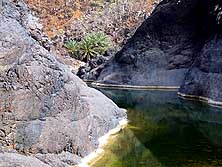
|
-
-
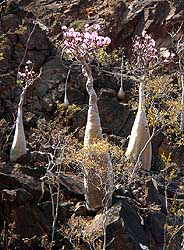
|
-
-
-
-
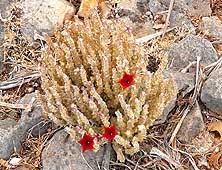
|
- 109
The river deep down in the canyon
- meanders between the high cliffs
|
- 110
Flowering bottle trees
- cling to the dry canyon walls
|
- 111
A shining dot between grey stones:
- The star shaped “Caralluma socotrana”, is
- a carrion flower growing only in Socotra
- – here on the Dicksam Plateau
|
-
- 7th Day: February 15th, 2011:
-
- The night was cold and humid. It is 55°F when the sun rises over the canyon. There is
bad news: Our guide Abdullah had to return head over heals to Hadibo due to family
problems. This tells us the guide of Klaus who speaks English. Our driver Ahmed talks only
Arabic. They have decided that we follow Klaus’ car without an own guide to
Qalansyia, our next destination in the Northwest.
|
-
-
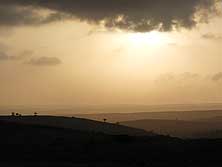
|
-
-
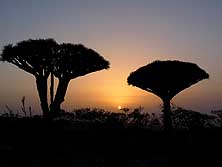
|
-
-
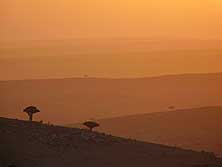
|
- 112
|
- 113
|
- 114
|
- The sun sets on the Dicksam Plateau. Here at 2’300ft. altitude we spend the night
in the tent at the Daerhu canyon edge
|
-
- Somehow we are a bit skeptical about the whole thing and insist to return first for two
hours to Hadibo to access the internet before continuing towards the West. As the saying
goes: “You won’t get far by lying!” Who is just stepping out of the Taj
Socotra Hotel when I am about to enter to use the bathroom?: Our guide Abdullah with a new
tour group (his family problems from the night before!!). His shock to see me is clearly
written on his face. Myself, I am not really surprised because this was our guess anyway.
Nevertheless: We don’t like the lie and even less the way our tour operator Meetaq
was trying to save a guide!
|
-
-
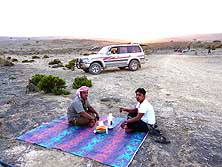
|
-
-
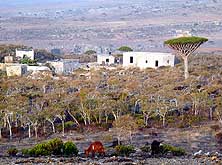
|
-
-
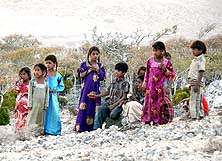
|
- 115
Our crew is drinking tea on
- the Dicksam Plateau: Right
- guide Abdullah, left driver Ahmed
|
- 116
The little hamlet catches the first rays
- of the rising sun at Dicksam Plateau, where
- the track to the Wadi Daerhu forks off
|
- 117
Village children visit us at
- our bush camp at Dicksam Plateau
|
-
- „I am so sorry!“ are then the first words of Meetaq, who immediately is
informed and shows up personally at the office of Felix Airways, where we are allowed to
use the Wifi (Internet). He introduces us to a new guide who soon turns out to be of
little use except for translating. No problem! This does not prevent us to continue
enjoying to explore the nature wonders of Socotra. Lunch is served once more at the Soq
Camping, where there are even vegetables in the standard menu. This is however the only
attractive thing in the otherwise unattractive place.
|
-
-
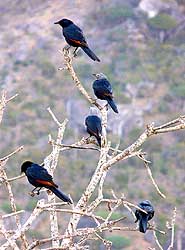
|
-
-
-
-
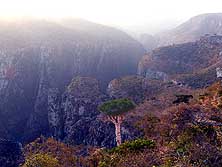
|
-
-
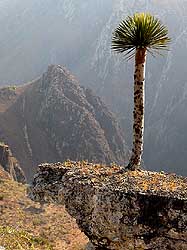
|
- 118
Socotra starlings make a
- short break on a branch
- at the Dicksam Plateau
|
- 119
View over the impressive
- canyon at Dicksam Plateau
|
- 120
A lonely Dragon Blood
- Tree stands majestically on a
- rock in the Daerhu canyon wall
|
-
- For the continuation of the 7th day, February 15th, 2011, in Qalansiya - please
click here
|
-
|
More websites
from Yemen, where we visited in February 2011 the Island of Socotra: (without
our vehicle)
- Yemen car trip (from Oman to Saudi Arabia) - with
our car from May 16th to June 15th, 1996
- Part 1: Socotra Island trip in Yemen
(East) –
Hadibo - Dihamri - Arher Beach
- Part 3: Socotra Island trip in Yemen
(West) – Qalansiya - Shouab Beach - Qadama Beach - Momi Plateau - Wadi Ayhaft
- Part 4: United Arab Emirates – Sharjah - Dubai
|
![]()
